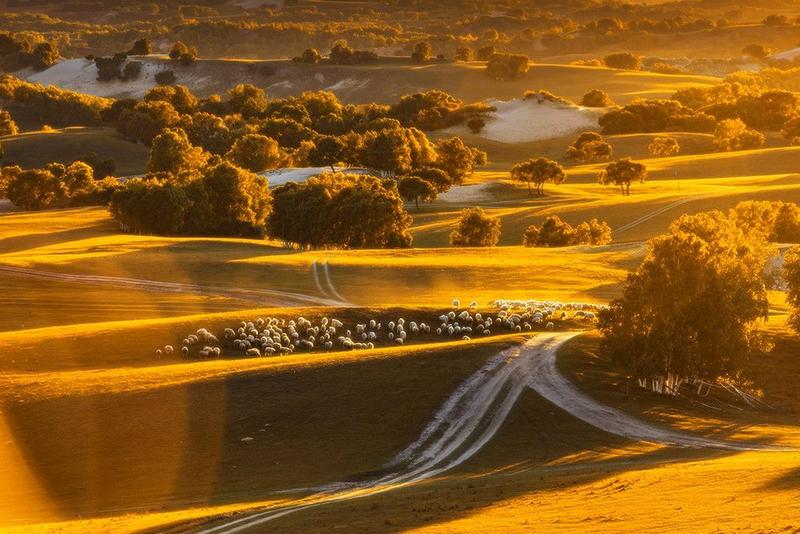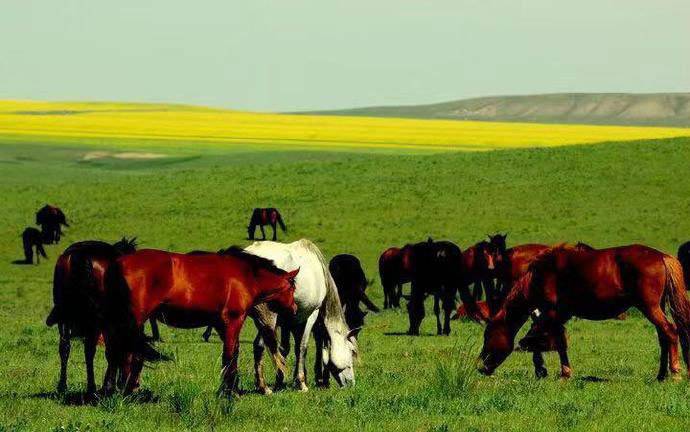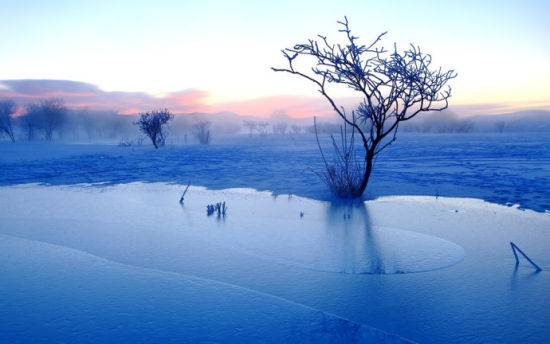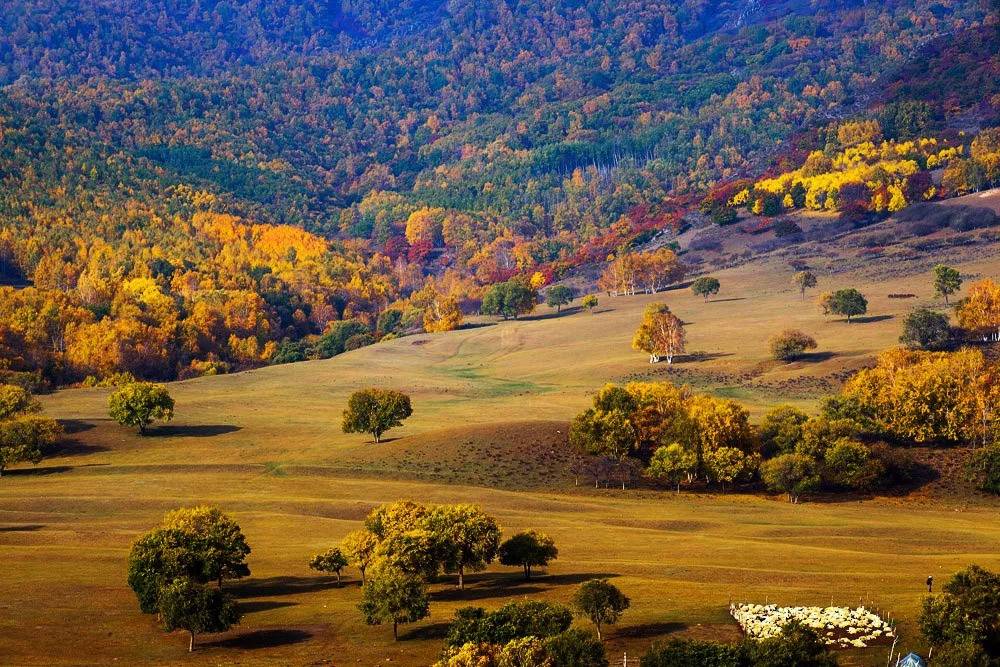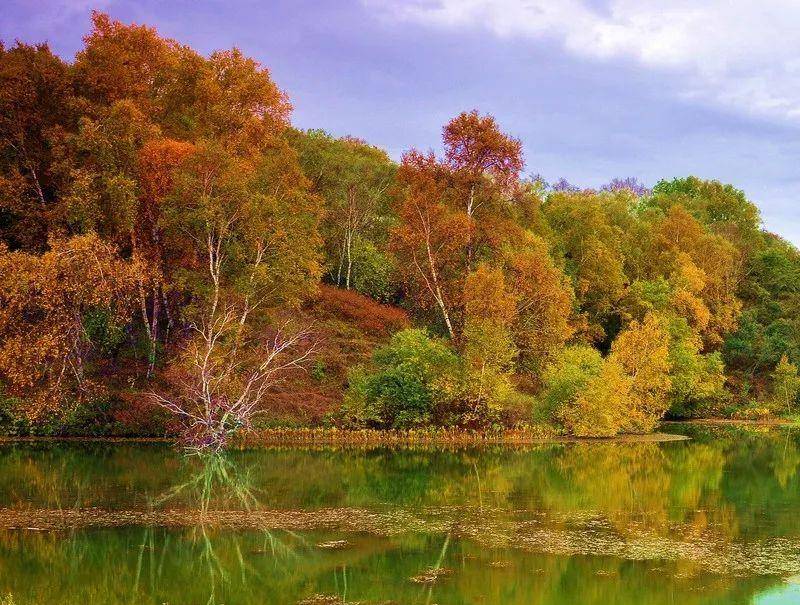For more than forty years, Hongshan Military Horse Farm has supplied over 15,000 military horses to the troops. In 2002, Hongshan Military Horse Farm was designated as a 'National Grassland Ecological Protection Demonstration Education Base' and an 'All-Army Ecological Environment Protection Demonstration Education Base' by the National Greening Committee, the State Forestry Administration, and the All-Army Green Committee. (In 1991, it was approved and announced by the State Council as a national key scenic spot, and it is a sub-scenic spot of the World Heritage Site Chengde Mountain Resort and its surrounding temples.)
Xiaohetou is nestled among layers of birch forests. The afternoon sun brings a touch of warmth to the autumn day, freely traversing through the thick golden fallen leaves. Besides the sound of the flowing water, you can occasionally hear the chirping of insects.
Wucai Mountain
Wucai Mountain is one of the main attractions for viewing the autumn scenery of secondary forests in the Machang jurisdiction. Originally named Yujiadashan, 'Wucai' (meaning 'multicolored') is a figurative term, as the mountain displays far more than just five colors. From late September to early October each year, due to the effects of light frost, different tree species on the mountain exhibit various colors based on their cold resistance. Wucai Mountain appears to be adorned in festive attire, with the green of pines, the red of oaks, the purple of apricots, the yellow and white of birches and poplars, and many other colors. The mountain is a vibrant tapestry of red, orange, yellow, green, blue, indigo, and violet, creating a breathtaking scene of layered forests painted in myriad hues. The grandeur of the vast landscape and the delicate beauty of smaller scenes make it hard to determine which is more beautiful. It is comparable to a fairy tale world. Wucai Mountain is home to various tree species such as sand willows, oaks, birches, maples, pines, firs, locusts, elms, and willows, as well as over a dozen types of shrubs including tiger thorn, mountain roses, vines, and lemon trees. It truly is a place where countless species thrive freely in the frosty sky.
Princess Lake
Legend has it that when Emperor Kangxi's third princess, Lan Qige, was forced to marry Galdan along the Bashang Grassland, her tears of sorrow formed a lake. This place is thus called Princess Lake.
Saihanba National Forest Park, Hebei
Through nearly 50 years of hard work by two generations in Saihanba, under extremely difficult conditions, 1.12 million acres of artificial forest have been successfully created on 1.4 million acres of desert wasteland, creating a green miracle of turning wasteland into a sea of forests and transforming the desert into an oasis.
